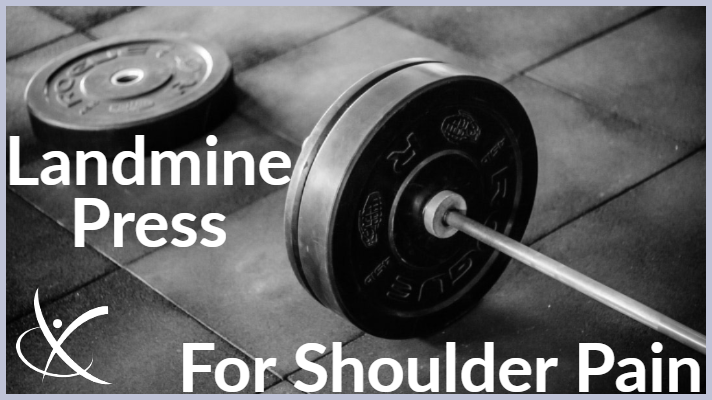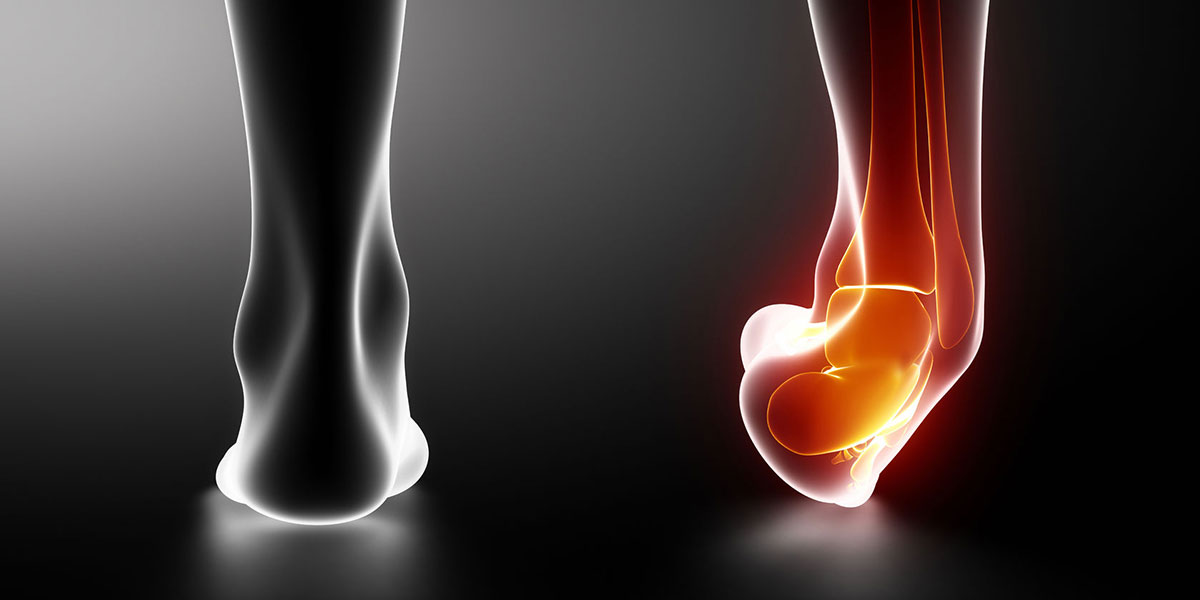
Shoulder Pain…Try A Landmine Press
May 19, 2019
Summer Training For College Athletes
June 3, 2019Sprained Ankle
What’s Next?
So, you “rolled your ankle” stepping off a curb or playing in your friendly sporting match this past weekend. Did you know that ankle sprains are one of the most common injuries, especially in the athletic population?
What is a sprain? A sprain occurs when there is overstretching and possible tearing of ligaments. So, what are ligaments? Ligaments are bands of tissue that connect bone to bone in our bodies. How do they happen? Typically, they occur when an unwanted force is placed upon a joint in our body (knee, ankle, shoulder, fingers, etc.). For example, a soccer player is dribbling a ball down the field when his or her opponent approaches for a tackle. Suddenly, the athlete dribbling the ball gets tackled from the inside, and their ankle rolls inward placing unwanted stress on the outer ligaments of the ankle. The athlete limps off the field knowing he or she sprained his/her ankle.
The most common ankle sprain is the one described in the scenario above, otherwise known as a lateral ankle sprain or inversion sprain. This is typically the injury that occurs when someone says they “rolled their ankle”. During a lateral ankle sprain, three ligaments can be involved. They are the posterior talofibular ligament(PTFL), the calcaneofibular ligament (CFL), and the anterior talofibular ligament (ATFL). Most often, the ATFL takes the brunt of the stretch and is often injured during that pesky misstep or tackle.
Medial ankle sprains (eversion sprains) and high ankle sprains, otherwise known as syndesmotic sprains are two less common types of ankle sprains. During a medial ankle sprain, a dense group of ligaments collectively called the deltoid ligament are involved. During a high ankle sprain, the ligaments connecting your two lower leg bones your tibia and fibula are often affected and sometimes this injury can require surgery. A high ankle sprain typically takes an extended period of time to heal as compared to a lateral or medial ankle sprain. This blog mainly focuses on recovery from a lateral ankle sprain, but some of the principles can be used for these types of sprains as well.
So, what do you do if you experience an ankle sprain? Well, that will depend on several things. If an individual has sprained his or her ankle and cannot bear weight on it, meaning that one cannot walk without some sort of assistance, an evaluation by a medical professional and X-rays are warranted to rule out any sort of fracture. If a fracture is ruled out, examination of the ankle joint is the next step. When a medical professional such as a physical therapist (yes, we can evaluate an ankle sprain) or an orthopedist examines a sprained ankle, we will grade it based upon several factors: walking ability (are you limping), pain level and type of pain, swelling, joint movement and ligamentous laxity. These things will aid us in determining the proper treatment strategy.
So, let’s examine several different scenarios:
- An athlete walks into the clinic after spraining his or her ankle while running yesterday. The individual walks without a limp but has minor golf-ball like swelling over the outside of the ankle and reports pain of 2-3/10. Upon examination, the medical professional deems there is minimal ligament laxity and the patient still has good ankle range of motion. In this scenario, this would be considered a grade I ankle sprain.
- An athlete walks with a slight limp into the clinic after sustaining an ankle injury after landing incorrectly during a basketball game. This individual exhibits a moderate golf-ball like swelling on the outside of his ankle and there is some bruising that is noted around the ankle joint and slightly into the foot. Pain is reported at 4-5/10 and upon examination there is moderate laxity of the ankle joint with slight impairments of the range of motion. In this scenario, this would be considered a grade II ankle sprain.
- An athlete can barely put weight on their foot and hops into the clinic. He or she reports being tackled during a soccer game and feeling their ankle roll underneath them. There is a large amount of swelling throughout the ankle and foot, and significant bruising noted as well. There is significant range of motion deficits and the individual reports pain of 7-8/10. Upon evaluation, the ankle joint is noted to be unstable with significant laxity as compared to the opposite side. In this scenario, this would be considered a grade III ankle sprain.
So what is all of this grade mumbo jumbo? Basically, it helps develop a guide to treatment. Typically, the lesser the grade, the quicker the recovery. For all ankle sprains, similar principles are used in early rehabilitation. If you read my last blog or listened to my last podcast (you can find them here: Management of Sprains and Strains: P.E.A.C.E and L.O.V.E) you would have heard a little bit about P.E.A.C.E and L.O.V.E in regards to taking care of soft tissue injuries (STI). So, initially within the first 48-72 hours, it is important to protect the joint, elevate, avoid anti-inflammatory use, compress the region to decrease edema and receive education on the injury (this is your trustworthy PT comes into play)! After that, depending on your grade of ankle sprain, things may change.
One of the most important things that has been noted in rehabilitating ankles, is initiating function and movement earlier. I guess this is where L.O.V.E comes into play. L stands for Load which means putting weight on the ankle as tolerated. Not every ankle sprain requires the use of crutches and not every ankle sprain requires bracing or use of a walking boot. If they do, it has found that less time on crutches is optimal and if in a walking boot, it should be worn for no more than 14 days to improve recovery! I will say, if someone has a severe grade III ankle sprain, longer may be necessary, but it that case, getting to your local physical therapist earlier than later may be to your advantage!
Early movement and education are important in success during an ankle sprain! These two things can help promote optimism, improved blood flow and tissue healing as well as an earlier return to exercise.
Optimism, education, and guided exercise have also shown to decrease risk for chronic ankle problems in the future!
One thing I want you all to grasp, and I know its difficult, is that a little bit of discomfort with activity post ankle sprain (or any injury, in fact) is normal! Pain level from 1-3 shouldn’t cause you to stop your activity if it does not increase significantly afterwards. If it does, most of the time it means you have returned to activity too fast and that is where we can help, especially with those over-achiever, stubborn people out there. I sure do know a few of them around here!
Don’t let that pesky ankle sprain or injury hold you back or keep you down. If you have any questions or concerns or have recently sprained your ankle and don’t know what to do, give us a call! Also, if you have had an injury and do not know what to do, feel free to visit our website where we offer Telemedicine Orthopedic Triage Visits (Online Orthopedic Triage). We can help you determine an appropriate plan of care to treat and address your injury, especially those sprained ankles!

Ashley Witson, PT, DPT





